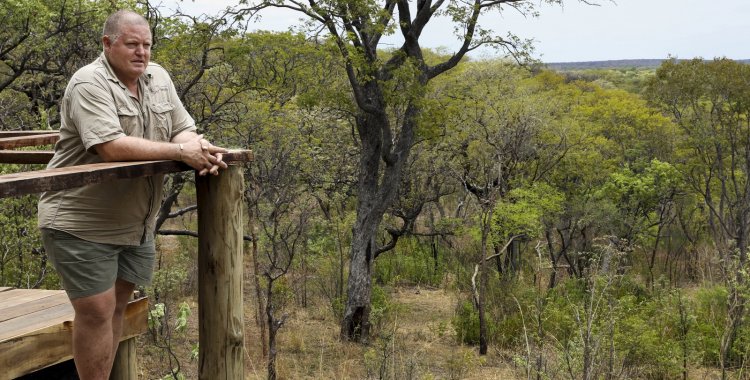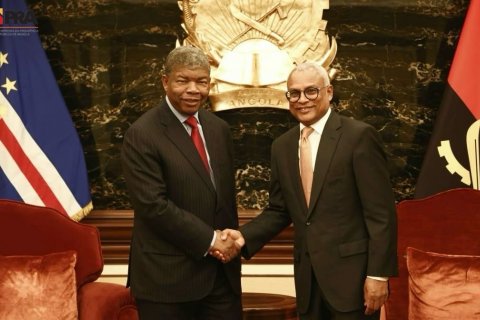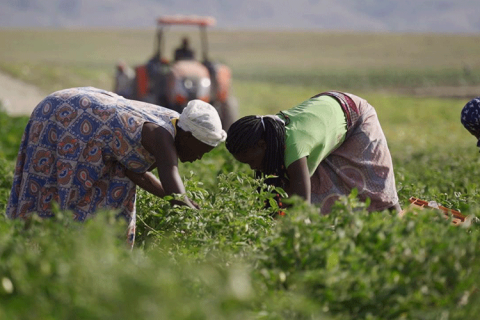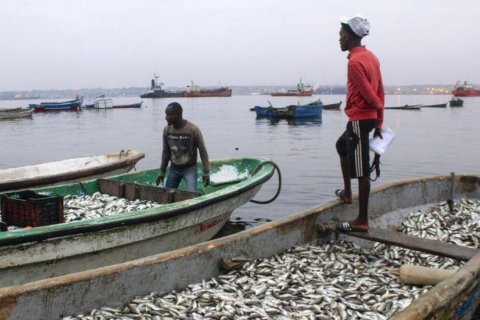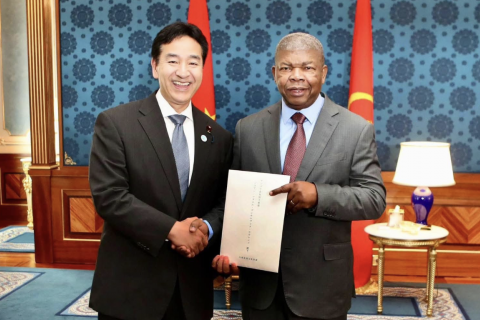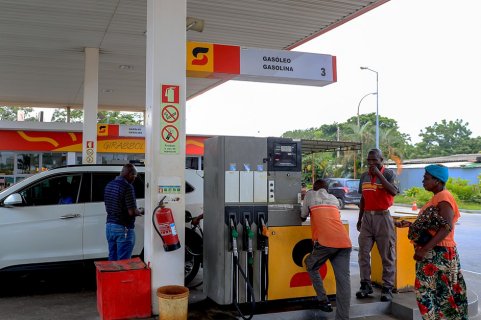Born in Windhoek (capital of Namibia) 53 years ago, the conservationist discovered Cuatir in 2012 when he was flying over the area in a plane and fell in love with the solitude of the place and the total absence of human remains, immediately starting the process to formalize a concession.
On that island, an extensive area nestled between the Cubango and Cuito rivers, around 1500 kilometers from the capital Luanda, the setting is that of the typical African savannah: a vast expanse of grass, which serves as pasture and hiding place for animals, stretching up to to the horizon, accompanied by the happy chirping of the bird species that abound there and the buzzing of insects.
Red sables, nunces, olongos and kudus are some of the antelope species that can be found there, enjoying 40 thousand hectares of freedom.
But there are also other mammals such as zebras, giraffes, wild dogs and even cheetahs, which leave their traces on the ground and are "caught" in the cameras strategically placed near the water fountains, despite normally remaining invisible to visitors.
It is here that Stefan set up his base, with a camping area and six bare bungalows, suitable for receiving tourists and scientists who have been investigating wildlife in this conservation project, where 32 species of mammals, 112 birds and 24 tree species.
In the early hours of the morning, small groups of impalas, nunces and kudus can be seen near the camp, as well as fleeting glimpses of shy giraffes, but no elusive felines, which prefer the night to hunt.
It was in 2020 that the Namibian began to reintroduce into Cuatir species that had disappeared due to the war, such as the giraffe and the zebra and which quickly readapted to their natural habitat.
For 2024, the arrival of a herd of 16 elephants from Namibia is expected, a complex operation that requires, in addition to licensing, capturing and transporting the animals, to extend the fence so that they do not return to their country of origin.
"It looks like they have GPS", jokes Stefan van Wyk, pointing out that, in colonial times, Cuatir was the area in Angola with the most elephants.
"The newspapers of the time talk about the caravans of hunters who came to Cuatir every year, until 1975 (at the time of independence). The Americans hunted elephants here in large quantities", he says.
However, during the civil war, which lasted almost three decades until 2002, the area was occupied by the National Union for the Total Independence of Angola (UNITA), which used the animals to eat and remain operational, exchanging the ivory for weapons.
"We want to repopulate the area with elephants to contribute to the wealth of Cuando Cubango (southern province), so the people can have a future in ecotourism", says the businessman, who normally receives tourists by air.
Far from everything, access by road is difficult and it is necessary to spend at least a day for anyone who wants to arrive via this route from Luanda. Part of the path – which includes a raft crossing – follows a trail that requires robust cars and bodies available to withstand the "beating".
Stefan van Wyk wants to expand the private reserve – the only one in Angola – to 200 thousand hectares to have enough area for large animals, such as elephants and buffaloes, and transform Cuatir into the largest privately managed safari park in Africa.
"South Africa has Tswualu, I think with 100 thousand hectares, Namibia has Erindi, with 70 thousand hectares, and this will be the largest private park in Africa for ecotourism", he aims, stressing that the province of Cuando Cubango is the more suitable for wildlife, thanks to the extensive forest area and the rainfall regime.
"We are lucky because this area is worthless for agriculture, the soil [is not good] because of the sand, so this area is available for wild animals and the animals can bring tourism, opportunities to create jobs in this area of Angola ", he highlights.
The faunal abundance contrasts with the absence of villages. In addition to the sparse Nganguela and Camussequele (San) communities, there are few traces of human presence.
Stefan has been recruiting and employing some of these villagers in the kitchen and in domestic work, others as watchmen to ward off poachers, and others serving as guides, as is the case with Camussequele Massada, whose trained eye easily finds the fresh trails of animals, guaranteeing you an extra income for your family.
The businessman believes that Angola is not yet prepared for tourism, despite having already eliminated one of the obstacles, with the end of visa requirements.
But, for example, there is a need to formalize the entry points at Menongue and Cuito Cuanavale airports, he says, stressing that, like Jamba, places linked to the Angolan civil war, "they will be important" for tourism.
"I think tourism can contribute a lot to Angola's economy, at the moment there are few tourists (...) and independent travel doesn't bring much money to the country, we want to help our economy and our people in this area", he says.
For now, it is mainly foreign tourists, from the United Kingdom, the United States, Belgium, Spaniards and some Portuguese, who come to Cuatir, looking for "a beautiful place" where they can take a short break before their next exotic destination.
But there are also threats to tourist development in the region, Stefan points out: "I heard that the Government has plans to prospect for oil in this area and loggers are perhaps the biggest threat, they destroy the trees and cut thousands of tons per year", he says, referring to the valuable mussivi and girassonde wood that, for now, abounds in those parts.
Poaching is another risk to nature conservation in this area where animals only started to return five years ago, warns the conservationist.
With plans to create another camp in January and build tree houses next to a viewpoint where tourists can enjoy the beauty of the African sunset, Stefan guarantees that he will continue to welcome small groups, with a maximum of ten people, because it is "a private experience".
In 2024, he wants to reinforce marketing outside the country to start attracting more tourists, highlighting its importance for the Angolan economy: "It will be a great benefit".

